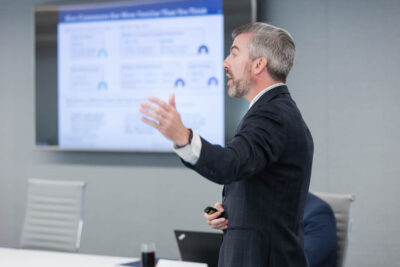What higher ed can learn from these successful academic program revitalizations
As colleges and universities confront growing financial strain, heightened program scrutiny from states, and new federal government demands for measurable outcomes, few can afford to sustain underperforming programs. At the same time, higher ed leaders must adapt to intensifying competition for students, deepening skepticism about degree value, and shifting workforce needs, especially as AI reshapes post-graduation opportunities.
To stay competitive, many institutions are turning their attention to revitalizing underperforming programs—not just to shore up enrollment, but to better align their offerings with what today’s students and employers expect. The savviest schools take a disciplined and data-informed approach, layering multiple interventions across content, delivery methods, and curriculum design.
Read on to learn about three successful efforts to revitalize academic programs—and how you can adapt these institutions’ strategies to strengthen your own academic portfolio.
Have your own program revitalization success story? Please share it with us here.
1. Incorporating AI and analytics to emphasize cross-functional skills
University of South Florida
Between 2017-2022, the University of South Florida’s B.S. in Accounting program experienced a 30% enrollment decline and a student withdrawal rate nearing 30%. In response, faculty launched a comprehensive revitalization effort to realign the curriculum with a changing industry. The redesigned curriculum now emphasizes AI, analytics, and cross-functional skills. For instance, new courses are designed to prepare students for an AI-driven job market, teaching them how to incorporate AI into organizational analytics and other core concepts.
These efforts were paired with expanded student supports and refreshed marketing efforts. Notably, teaching assistants are instructed to focus on supporting at-risk students rather than grading to reduce attrition. Faculty also changed the program’s name to “B.S. in Accountancy and Analytics,” signaling greater alignment with industry shifts.
These revitalization efforts boosted year-over-year enrollment by 11% in 2023 and 18% in 2024, while the program’s withdrawal and failure rate decreased to 10%.
2. Restructuring curricula to improve enrollment and graduation rates
Texas A&M University-Texarkana
In the early 2010’s, Texas A&M University-Texarkana’s B.S. in Computer Science program landed on its Low-Producing Programs list. In response, faculty restructured the struggling program to streamline course offerings, improve graduation rates, and support post-graduation outcomes.
A curriculum review revealed that students often faced long and confusing prerequisite chains that included nonessential material, delaying graduation timelines. To address this issue, leadership removed these unnecessary prerequisites and shifted key concepts to other courses. Professors taught essential content in parallel, rather than sequentially, to help students retain and apply knowledge and complete degrees faster. The program redesign also incorporated new hybrid and online course options to increase flexibility for students.
These revitalization efforts paid off: from 2015 to 2022, the three-year average for the number of graduates increased from 3.4 to 11, and new enrollees rose from 19 to 72—removing the program from the university’s Low-Producing Program list.
3. Rethinking course sequencing to support student retention
Wright State University
At Wright State University, nearly 40% of undergraduate engineering students failed to progress through the first year of the major. Engineering faculty determined that many incoming students struggled with the early calculus-heavy course sequence.
To address this, department leadership redesigned the first-year curriculum by creating a new introductory engineering course that included foundational calculus concepts, rather than requiring students to complete Calculus I and II first. This allowed students to apply mathematical concepts to engineering coursework early on, building confidence and comprehension before tackling more advanced calculus.
The improvement was clear: the curriculum change had a statistically significant impact on first-year retention and Calculus I performance, and degree completion rates doubled compared to those of the original sequence.
What makes these revitalization strategies effective?
Though these institutions used a variety of revitalization strategies to refresh their programs, their successes share common threads. Each case study reveals the importance of strong program portfolio hygiene, including regular program reviews, data-driven decision-making, competitor and market scans, and integrated revitalization strategies. As shown, these tactics can have a meaningful, measurable, and lasting impact on degree completion and student outcomes.
Interested in more program review tactics? Explore EAB’s full research studies for guidance on elevating program performance and four strategies to balance revitalization and discontinuance.

More Blogs

Fixing What’s Broken in Interdisciplinary Program Design

The top challenges for Canadian postsecondary leaders—and how to overcome them
